Building on Ben Bolker's comment:
This code doesn't strictly tell you all the mathematical local maxima, it just tells you points which are the max within a width-20 window whose endpoints don't equal the max.
values <- c(1,1,1,2,2,3,3,5,4,5,5,5,5,6,6,6,6,5,5,5,
4,4,4,7,8,8,8,8,8,8,8,4,3,2,2,3,5,6,7,4,
2,2,3,9,9,9,9,9,9,9,9,9,9,5,1,3,3,1)
dens <- density(values)
i1 <-
zoo::rollapply(dens$y, 20, function(x){
if(head(x, 1) < max(x) & tail(x, 1) < max(x))
which.max(x)
else
NA
})
max_inds <- unique(i1 + seq_along(i1) - 1)
x_at_max <- dens$x[max_inds[!is.na(max_inds)]]
data.frame(Values=c(1,1,1,2,2,3,3,5,4,5,5,5,5,6,6,6,6,5,5,5,
4,4,4,7,8,8,8,8,8,8,8,4,3,2,2,3,5,6,7,4,
2,2,3,9,9,9,9,9,9,9,9,9,9,5,1,3,3,1))%>%
ggplot(aes(x=Values))+
geom_density()+
theme_classic() +
geom_vline(xintercept = x_at_max)

Edit:
Actually, looks like this gives the same result as the approach in the answer linked by Ben Bolker. You should probably use that one. I assume it's faster, and also it will give you all the local maximua even if they're not the max of a width-20 window.
r <- rle(dens$y)
which(rep(x = diff(sign(diff(c(-Inf, r$values, -Inf)))) == -2,
times = r$lengths))
# [1] 240 378
max_inds[!is.na(max_inds)]
# [1] 240 378


